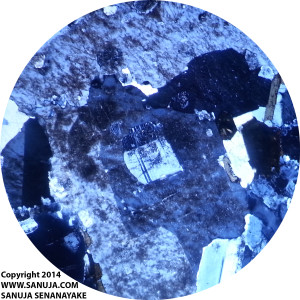Igneous Petrology
This is an “extension” of Geology 311 (Mineralogy and Rocks) at the University of Calgary. The foundation for these two particular subjects can be found in Geology 311 Midterm and Geology 311 Final pages. Other 300 and 400-level classes such as Structural Geology and Advanced Mineralogy will also help you out. On this page, ONLY the advanced materials are empathized because I do not think it is productive to repeat information from junior classes. Visit this page for Metamorphic Petrology
Geology (GLGY 443-UCAL) Midterm
Congratulations - you have completed Geology (GLGY 443-UCAL) Midterm.
You scored %%SCORE%% out of %%TOTAL%%.
Your performance has been rated as %%RATING%%
You may download this exam as a PDF file here.
Credits: Based on the excellent class notes provided by, Igneous: Dr. Rajeev Nair and Metamorphic: Dr. David Pattison during Winter 2014.
FAQ | Report an Error
Also visit: Petrology Media Library
List of concepts
Igneous Petrology
- Formation of igneous rocks and their compositional variations.
- Difference between MORB and OIB basalts.
- Difference between mafic and felsic magma (and processes).
- Magma differentiation and layered mafic intrusions.
- Physical and chemical properties
- Geochemical processes (magma differentiation, isotopic variations, melting and cooling, etc), phase equilibria and geothermobarometry
- Classifications and textures.
- Other processes such as island arcs and continental flood basalts.
Metamorphic Petrology
- What are metamorphic rocks and how do they differ from igneous and sedimentary rocks?
- What is petrology?
- Differences between stress, strain and pressure dynamics.
- Hydrostatic and lithostatic pressures and the orientations of sigma-1,2,3.
- Difference between lineation of foliation.
- Metamorphic textures and structures; deformation, P-T driven textural changes, grain size and shape, grading (graded beds/layers), inclusions, etc.
- History and current condition of rocks.
- Classifications and textures.

